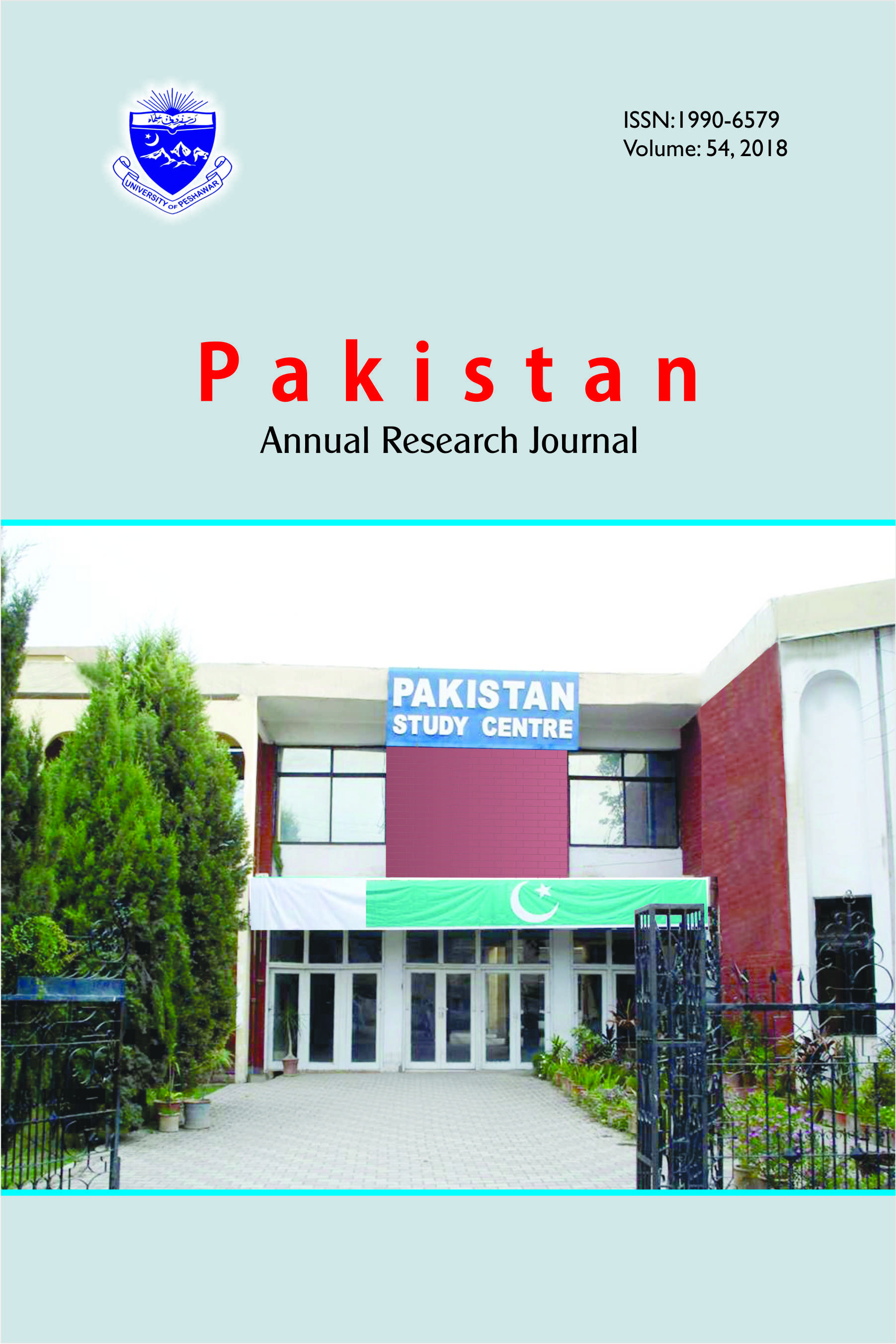WOMEN LEGISLATORS AND THEIR INTERESTS IN POLICY MAKING IN PAKISTAN: A STUDY OF PRIVATE MEMBERS BILLS PRESENTED IN NATIONAL ASSEMBLY DURING 2010-15
Keywords:
Women, Interests, Policy output, National Assembly, Private Member BillsAbstract
Ever since the increase in the number of women representatives in Pakistan’s legislature through reserved seats is made, gender politics has taken a lot of significance in the political landscape of Pakistan. Women thus entering in legislative institutions are expected, of course, to voice and advance issues relevant to women, family and children, i.e. pursue the traditional gender agenda. At the same time, they are expected to include gender perspective while addressing other public issues of mainstream politics. This paper seeks to answer the question as which areas of interests and priorities women representatives in the National Assembly of Pakistan have highlighted in policy output, and to what extent they raised the issues pertaining to public issues and mainstream politics. Private Members Bills presented by the women representatives in National Assembly of Pakistan during 2010-15 were examined. Performance of women representatives was found phenomenal and not limited to raising issues of women, children and marginalized segments of the society. Rather, activities of women legislators reflected a much broader variety of interests, and not simply limited to those areas traditionally thought to be of women’s interest.
References
Phillips, A. 1998. “Democracy and Representation: Or, Why Should it Matter Who our Representatives Are?” A. Phillips (eds.) Feminism and Politics. New
York: Oxford University Press : 224-240.
Inter Parliamentary Union. 2015. "Women In Parliament: 20 Years In
Review". Geneva: Inter-Parliamentary Union (IPU)
IPU. 2008. "Equality In Politics: A Survey Of Women And Men In
Parliaments". Geneva: Inter Parliamentary Union.
http://www.ipu.org/PDF/publications/equality08-overview-e.pdf.
"Women In Parliaments: World Classification". 2018. Archive.Ipu.Org.
http://archive.ipu.org/wmn-e/classif.htm.
Tabassum, N. 2011. “Towards Unlocking Patriarchy: Women’s Participation in Local Politics in Pakistan”. Unpublished doctoral thesis, The Graduate School of Social Sciences of Middle East Technical University.
Phillips, A. 1995. The Politics of Presence. Oxford: Oxford University Press. 7 Robert, Edward Sterken and Zia, Lamia. “Does a link exist between increasing Women's Participation in Parliament and the Introduction and Passage of Laws to Protect Women in Pakistan?” Journal of Political Studies. 22 (2) (2015): 645-657
Pitkin, Hanna Fenichel. 2011. The Concept Of Representation. Berkeley,
Calif.: University of California Press.
Kurebwa, Jeffrey. “A Review of Hanna Pitkin’s (1967) Conception of
Women’s Political Representation”. International Journal of Scientific and
Research Publications (IJSRP), 5 (11) (2015): 50-60.
Kanter, Rosabeth Moss."Some Effects Of Proportions On Group Life:
Skewed Sex Ratios And Responses To Token Women". American Journal Of
Sociology 82 (5) (1977): 965-990.
Schwindt-Bayer, L.A. and W. Mishler (2005) “An integrated model of
women’s representation” in The Journal of Politics. Vol. 67, No. 2: 407-428
Sarah, Childs, and Lena Krook Mona. 2008. "Critical Mass Theory And
Women's Political Representation". Political Studies 56 (3): 725-736.
doi:10.1111/j.1467-9248.2007.00712.x.
Dahlerup, Drude. 2013. Women, Quotas And Politics. Hoboken: Taylor and Francis.
Phillips, A. 1995. The Politics of Presence. Oxford: Oxford University Press.
Molyneux, M.“Mobilization without Emancipation? Women's Interests, the State, and Revolution in Nicaragua”. Feminist Studies 11(2) (1985): 227-254
Dodson, Debra L, and Susan J Carroll. 1991. "Reshaping The Agenda:
Women In State Legislatures". The Impact Of Women In Public Office. New
Jersey: Center for American Women and Politics.
O'Regan, V. 2000. "Gender Matters: Female Policymakers' Influence In Industrialized Nations". Choice Reviews Online 38 (04): 38-2387-38-2387. doi:10.5860/choice.38-2387.
Wängnerud, Lena. 2000. “Testing the Politics of Presence: Women's Representation in the Swedish Riksdag”. Scandinavian Political Studies 23(1): 67-91.
University Press.
Voice, Trust and Memory: Marginalized Groups and the Failings of Liberal Representation”.. Princeton: Princeton
Williams, Melissa S. 2000. “
IPU, 2008. Equality in Politics: A Survey of Women and Men in Parliaments
Markham, S. 2012. "Strengthening Women's Roles In Parliaments”.
Parliamentary Affairs 65 (3): 688-698. doi:10.1093/pa/gss024.
Franceschet, Susan, and Jennifer M. Piscopo. 2008. "Gender Quotas And Women's Substantive Representation: Lessons From Argentina". Politics & Gender 4 (03). 393-425
Waqar, Maria. “The Politics of Reserved Seats and Substantive Representation: The Beliefs and Behavior of ‘Quota Women’ in Pakistan”. unpublished Draft of Prospectus (2017)
Saint-Germain, Michelle A. 1989. “Does Their Difference Make a Difference? The Impact of Women on Public Policy in Arizona Legislature.”
Social Science Quarterly 70(4):956 968
Clift, Charles. 2013. "The Role of The World Health Organization In The
International System". Centre on Global Health Security Working Group Papers. London: Chatham House.
Khawaja, Asma Shakir. “ Women in Security Policy-making: A Case Study of Pakistan”. Strategic Studies 37(1) (2017): 90-107
https://www.inclusivesecurity.org/2016/03/04/why-are-we-settling/
Mumtaz, Khawar, and Farida Shaheed. 1987. Women Of Pakistan. London: Zed.
Noreen, Naveeda, and Razia, Musarrat. "Women Struggle For Legal
Empowerment In Pakistan Historical Overview".Journal Of Public Administration And Governance 4, no. 1 (2014): 134.
Pakistan Bureau Of Statistics | 6Th Population And Housing Census".
Pbscensus.Gov.Pk. http://www.pbscensus.gov.pk/.
Hyder Shabir., Akram., Naeem., and Padda. Ihtasham. ”Impact of Terrorism on Economic Development in Pakistan”. Pakistan Business Review,16 (2015): 704-718





